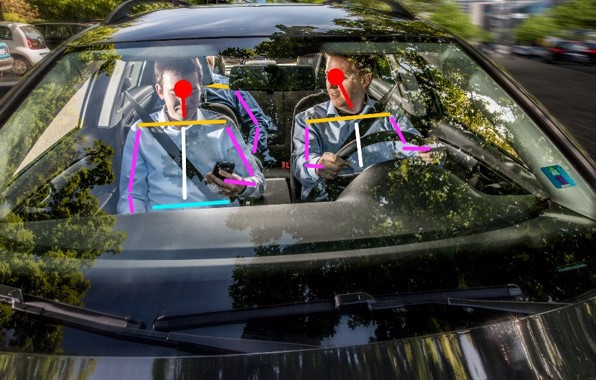Machine Learning - User Perception and Intelligent Assistance
Camera-based user interfaces are the eyes for the machine. When users are seen and perceived, a system can adapt to them and cooperate with them.
We design and develop our own algorithms for camera-based people detection. Our systems are based on the current state of the art in science and technology. We offer a comprehensive overview of the latest methods of machine learning and artificial intelligence and adapt procedures to specific problems.
Our range of services includes demonstrators, optimization of existing workflows by integrating incremental innovations or the design and implementation of complex assistance systems.
Modular people recognition
Benefit from our competence in comprehensive people registration. Use individual components to enrich existing work steps with innovation. Or design complex assistance functions with intelligent and adaptive systems together with us. We support you from the very beginning with experts and solutions for the following topics:
People localization, people counting, people tracking:
- Recording the position of several people, e.g. in the mixed reality laboratory (e.g. in the Elbedome project)
- People counting and presence detection of people (e.g. in the project Porsche Museum Stuttgart)
Face Detection and Face Identification
- Finding and counting faces in camera images, e.g. access control
- Identification of users, e.g. to personalize the user experience
Age and gender recognition
- Respond to age and gender of users
- Automatic adaptation of content to the viewing target group
Viewing direction recognition
- Tracking exactly where users are looking - stationary and mobile
- View-based interaction concepts (e.g. in the project Blickbasierte Bildauswertung)
Head rotation detection
- Selection of optimal camera views for frontal shots
- Approximation of the viewing direction by turning the head
- Tracking the visual attention of people
Body pose recognition
- Recognition of posture in the form of a skeleton model (e.g. in the project InCarIn)
- Motion detection of individual limbs
- Recognition of interactions with the environment and secondary activities (e.g. in the project Pakos)
Hand and pointing gesture recognition
- Innovative gesture interaction (e.g. in the project Zeigegestenbasierte Fehlermarkierung zur Qualitätssicherung)
 Fraunhofer Institute of Optronics, System Technologies and Image Exploitation IOSB
Fraunhofer Institute of Optronics, System Technologies and Image Exploitation IOSB 